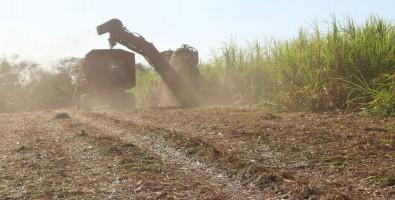When it comes to harvesting electricity and second-generation ethanol sugarcane leaves have been found to be very useful. At harvest time, the leaves are stripped and the stalks chopped. While the stalks are removed for use in the processing of sugar and ethanol, the leaves are often left behind on the ground. Eventually, the leaves form a nutrient-rich layer of straw which contributes to the fertilization of the soil.
There are roughly around 10 million hectares of sugarcane land in Brazil, accounting for some 40% of the whole world’s production. Removing straw after harvest, opposed to leaving it be, could actually double the amount of fertilizer needed to sustain Brazilian sugarcane plantations by 2050. This dire warning was discovered by a group of researchers connected with both the University of Sao Paulo’s Luiz de Queiroz College of Agriculture and the National Biorenewables Laboratory located within the National Energy and Materials Research Center.

In the study, the researchers calculated just how much of the nutrients were retained by sugarcane straw and how much fertilizer would be needed if there were no leaves left behind. “We converted the value of the nutrients in straw into fertilizer equivalent (nitrogen, phosphorus, and potassium, NPK). Growers who remove this biomass will have to buy NPK and use it to replenish soil nutrients,” confirmed researcher and first author of the study, Mauricio Cherubin.
Leaving the straw to naturally degrade helps in the cycling of nutrients. Removing the straw disrupts this cycle. It also results in less efficient pest control, lower crop yields, less biological activity in the soil, and more compacted soil.
Results from the study confirm that total straw removal requires an annual fertilizer amount of 195kg per hectare, costing approximately $90. But this is around twice the amount of fertilizer used currently in Brazil’s most abundant sugarcane regions. If farmers and land workers were to remove all the dry straw but leave the green leaves on the ground, this would reduce the amount of fertilizer needed to just 27kg per hectare, costing around $27.
“As can be seen, the decision whether or not to leave straw on the ground has a significant impact on the crop and the entire industry,” says Cherubin. Currently, each individual mill determines how much of the straw to leave and where. But this is inefficient. According to Cherubin, “we need a collective effort to define criteria for this practice, with all the associated benefits in terms of bioenergy production, soil quality, and productivity.”
The acreage under sugarcane in Brazil has expanded dramatically in the last three decades. If it continues to grow at this rate then the amount of NPK fertilizer consumed by sugarcane growers will rise 80% by 2050.
So, as you can see, the use of sugarcane straw provides us with great opportunities when it comes to creating bioenergy. But it does come at a cost and both the pros and cons should be considered.
Photo by Anastasia Zhenina on Unsplash

